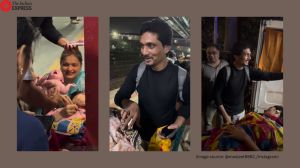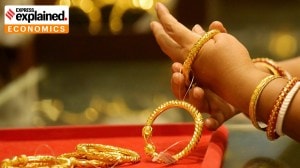The Shape of Things to Come
Sculpture, the unglamorous limb of Indian art, is finally getting noticed

FOR MUCH PART SINCE the 90s, In-dian sculptors have been banging their heads. Where is that big art buzz everyone is talking about? While lack of exposure, diminishing public commis-sions and reluctant gallerists who rarely looked beyond the canvas as cash cows added to their woes, this reclusive, under-ground breed of artists are slowly emerg-ing out of the painter’s shadows.
There is a resurgence of interest in sculptures, till now the unglamorous limb of Indian art. Gallerists are now willing to test its commercial viability and add nov-elty to their shows by throwing in three-di-mensional objects. Once a popular do-main with painters, sculptors are also beginning to participate more often in art camps. Uttarayan Art Foundation, the much-awaited centre near Baroda, set up by art connoisseur Rakesh Agrawal, man-aging director of Lanxess ABS, is expected to open with a dedicated sculpture art camp in December, where some 20 sculp-tors are expected to assemble.
“Today, the galleries are willing to pay and carry your work long distances for showcasing them in exhibitions. They are even willing to lug heavy works up three floors, unheard even a few years ago. This is, what you call, happy hammering times,” says K S Radhakrishnan. While last year saw a range of shows from terracotta objects by Himmat Shah to K S Radhakrishnan, who celebrated his bronze muse, the young Santhal boy he met in a village more than a decade ago, now the Pallete Art Gallery is set to hold a show of Kolkata–based Gayatri Chakravarty’s paper sculpture in Novem-ber and talks are on with the prominent artist Dhruva Mistry. Vadehra’s gallery in Okhla will see at least two shows in the next eight months. In October, it plans to hold a show that will focus on how artists use ordinary objects as sculptures. It will feature artists such as A Balasubramanian, Mithu Sen and current hot celebrity of the art world, Subodh Gupta. The gallery has pulled together a range of works by sculp-tors like Valsan Koorma Kolleri, Dhruva Mistry and Shubhra Reddy for its show in April. The stakes are clearly rising.
Setting the pace was the exhibition ti-tled The Human Figure at New Delhi’s Lalit Kala Akademi, that ended this week. The focus was on the 18 artists, who express their broader concerns for the human condition. As the Bangalore-based cura- tor Marta Jakimowicz puts it, the show is about the “intimate context” that artists operate within.
These artists see themselves at a more personal level. To Shanthi Swaroopini and Navjot, who have been working with the ethnic communities in Bastar, it was the eternal question of the male gaze and the feminine. Prithpal Singh Ladi’s elaborate stone monuments, complete with steel dragonflies and hindless frogs, are artistic sketches of a personal loss. The smoothly sculpted ivory male figure is Jehagir Jani’s way of reveling in his homosexuality. Ebenezer Sundar Singh’s dramatic de-piction of a swinging Christ-like figure, re-flects his faith. As a reminder of the holo-caust, Dhruva Mistry reinterprets Picasso’s famous Guernica painting. The abstract geometrical lines of the famous work literally jumps out of the canvas in the form of a steel sculpture at the en-trance of the hall.
While the artists operated within the framework of the human figure, it was more about reflection on personal experi-ences than showcasing their best works. Other artists on show were Ravinder Reddy, Mistry, Subba Ghosh, Alex Mathew and Ravi Shah.
But the surprising entrants were two painters who are striving to break out of the canvas to sculpting. Kallat’s stainless steel piece of slum children with heavy clogs in the shape of a hut is more interac-tive, and teases the audience to touch and feel the black rub off in their finger as a participatory experience.
But the crossover of painters into sculpture is prompting a debate in the art community. Can years of mastering stone chiseling replace works of temporary ma-terials such as fibreglass? The old school, it appears, is in sync with the current inter-national wave that emphasises on seeing the sweat and stamp of the artist.
But younger artists are more inclined to adopt the conceptual route as their vehicle of thought, an occidental trend of the 90s; to find meaning in objects found in their living experience in a temporary world.






- 01
- 02
- 03
- 04
- 05

























